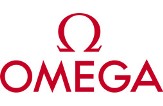The Principles of Good Logo Design
Logo design is playing an increasingly vital role in the personalisation of companies, products, and services. As the cornerstone of brand identity, a good logo helps set the stage for the development of a successful and long-lasting brand.
Designing an exceptional logo is time consuming and a lot of hard work. To be able to interpret a design brief and come up with a design concept that distills the very essence of a company takes a very unique individual.
Aside from having a combination of raw talent, communication skills and a lot of patience (to name a few), it is essential that the designer develops an astute understanding of the basic principles of what makes a good logo design.
A good logo should be; simple, distinctive, relevant, memorable, timeless, and versatile.
Lets take a look at those principles in more detail.
1. Simple
Example: Seven Network (Australia) Logo
Designed by Ken Cato, in 2003
A good logo is simple in its construction, but not in its concept. Quite often to the inexperienced eye, a good logo may look so simple that it looks like it was put together in a matter of minutes.
The vast majority of logo designs that are both simple and successful are backed by many hours of research and unused concepts that never made the cut. It is usually the result of an extensive and exhaustive logo design process.
Another advantage of simplicity in logo design is that a simple logo is much more likely to align with the other five principles of good logo design: distinctive, relevant, memorable, timeless and versatile.
2. Distinctive
Example: Apple Logo
Original Designed by Rob Janoff, in 1977
A distinctive logo stands out from the crowd and will overall be unique in appearance. A logo that is unique will have an essence that somehow distinguishes it from the pack. It should be distinctive while also effectively portraying the clients business requirements.
Given that there are millions of logos currently in existence, and hundreds, if not thousands of new ones being created everyday, it is increasingly difficult to design a logo that is distinctive. The ability to design distinctive logos on a consistent basis makes an exceptional logo designer.
3. Relevant
Amazon.com Logo
Designed by Turner Duckworth, in 2000
A good logo design will be relevant to the industry, the client and the target market.
If you are designing a logo for a kindergarten, it should be fair to say that it shouldn’t look like it was designed for a bank, and vice-versa.
To design a relevant logo the designer should not rely on the design brief alone. All clients and their respective industries are different, no matter how straight-forward they may seem at first glance. By conducting further research, it will help to create a relevant design that speaks directly to the intended audience.
4. Memorable
Nike Logo
Designed by Carolyn Davidson, in 1971
A well designed logo will be committed to memory at a single glance, and will be easily recalled by the viewer. Simplicity goes a long way here.
Recognition breeds familiarity, which assists in building trust and loyalty in a brand.
5. Timeless
Omega Watch Logo
Design by Unknown, in 1894
A good logo design will last for decades without the need for a major redesign. This is something a designer must constantly keep in the back of their minds during the design process.
What is the number one way to help ensure the longevity of a logo?
Avoid trends.
As creative types, it is often very tempting for designers to implement trendy elements into a logo design. Sometimes a trendy element can even sneak its way into a design without the designer realising.
Logo design is usually about building trust and loyalty in a brand over the long-term. Trendy typefaces, imagery and colours will be out of fashion within a relatively short period of time., therefore their use undermines the ability of the client to build long-term value in their brand. Not many clients want to have their logo redesigned every few years.
6. Versatile
Royal Dutch Shell Logo
Designed by Raymond Loewy, in 1971
A well designed logo will be usable across a wide range of applications. The logo should look good on a business card, on the side of a billboard, or as a favicon on a clients website.
To ensure versatility, a logo should be designed in vector format. This will ensure that the logo can be scaled to any size without compromising image quality. For designing a logo use Adobe Illustrator, not Photoshop.
Some clients will specify in the design brief that their logo will only be used for one specific medium, e.g. on their website. Be wary of this. Requirements often change so it is usually best to always design a logo to be used across various mediums.
Additional Resources on Good Logo Design
Most designers have their own variation on the principles a good logo design. Here are what some other great logo designers have to say on the topic;
What makes a good logo by David Airey
What a logo does not have to be or do by Brian Hoff
Vital Tips For Effective Logo Design by Jacob Cass
Photo by Alistair Israel
What do you think?
Does your favourite logo adhere to these six principles? We would love to hear your feedback.





